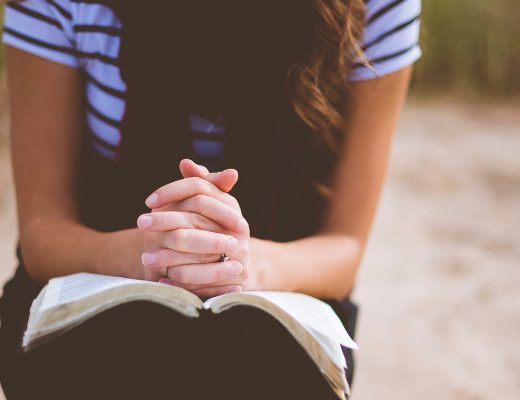St Edward’s Church, 31st July 2022 / Dedication Festival
Readings: Psalm 27, Ephesians 2:19-end, Matthew 10:1-8 & Matthew 28:16-20
(Burgess Hill historical info from The Town Council Website)
Burgess Hill is sometimes thought of as a new town but you know there were settlements here in the 13th C – the name is thought to come from The Burgeys Family who were recorded as being taxed here in 1296. This whole area was part of the ancient parishes of Clayton and Keymer, both Saxon settlements and mentioned in the Domesday book.
The area was known as St John’s Common and in the 14th Century there began here the annual ‘St John’s sheep fair’ which took place on 24 June – St John Baptist Day – which ran up until 1912. Brick and tile manufacturing – something the area is well known for – began in 17th C. In the common area – which covered quite a large part of what is now BH, by 18th C there were 4 shops and 2 alehouses and a number of craftspeople plying their trade. A settlement was growing.
Of course the arrival of the railway brought much quicker growth, Brighton and Southcoast railway opening in 1841, which paved the way for huge expansion over the next 40 years and led to the birth of the town as we know it today – which much subsequent building and development over the years.
Spiritually we know there was worship going on in this locality from the 19th C. A chapel – St John’s chapel – built in 1829, the site of which is now Centre Church. Then St John’s church was built for the growing population of the town in 1861, consecrated in 1863. And of course other churches followed.
You know we talk a lot about church planting these days but this church, St Edward’s, was essentially a church plant, back in the 1960s. This place was a churchyard for St John’s with a small chapel (now our café). St John’s was overflowing as the growth of the town brought more people here and they needed to spread out. So this extension was built in 1967 to create a space for worship and it was consecrated in 1968. For many years the 2 churches were linked, until in 2000 St Edward’s became a parish in its own right.
But wider than that there have been people worshipping God in this area for 1000 years. This land was originally part of the parishes of Keymer and Clayton. St John the Baptist at Clayton is 1000 years old and at Keymer, there was a church from the 11th C.
There is much more of this spiritual history of course, as +Ruth reminded us when she came – Æðelwealh became Sussex’s first Christian king when he married Eafe, the daughter of Wulfhere, the Christian king of Mercia – so we can thank a women for the spread of Christianity in Sussex – just saying… 🙂 And not long after St Wilfrid landed at Selsey in 681, evangelising the local area and later being granted land from the King to build Selsey Abbey.
So, as we worship here today on our 54th birthday (though actually it was a few weeks ago) all that is part of our legacy, and we are part of creating the future spiritual legacy here. And as I’ve been talking about over the last few months, we want to honour the past, navigate the present and build for the future.
This area has changed so much over the years, this church has changed and continues to as we look forward, but the uniting factor is God – here in Burgess Hill alone we know that there has been a place of worship here for almost 200 years and in the area for 1000! For over 1000 years people in this locality have worshipped the Christian God. People have done as Jesus taught (as we heard in Matthew) they have gone out to make disciples, to baptise new believers, in the name of the Father and of the Son and of the Holy Spirit.
We are part of that heritage. And part of our role is to continue that heritage so that others can look back in 100 years time and say, in 2022 BH had a rich spiritual heritage. That God was at work here. We are as our Ephesians passage noted, we are building on the foundation of all that has gone before with Christ as our cornerstone.
And whilst we celebrate the dedication of this place today, that is about so much more than a building. Ekkelsia / church – you will remember I am sure, means the people. Us. So if we want to be people who obey Jesus’ Great Commission – which by the way is for all of us – in Matthew 28 Jesus sends out the disciples saying:
Therefore go and make disciples of all nations, baptizing them in the name of the Father and of the Son and of the Holy Spirit, and teaching them to obey everything I have commanded you.
Matthew 28: 19-20
We read earlier in Ch 10 that Jesus taught them:
…proclaim this message: ‘The kingdom of heaven has come near.’ Heal the sick, raise the dead, cleanse those who have leprosy, drive out demons. Freely you have received; freely give.
Matthew 10: 7-8
This is what Jesus taught them, what he commanded them to do, so the Great Commission is to continue that.
As they were sent out this is what they were to do, and to teach new believers to obey the same. And so those new believers passed on the same ,and on and on, down to us, so the same message stands for us – that we too should be making disciples, baptising people, proclaiming the kingdom of heaven, seeking healing and freedom and more.
For us to continue the legacy of faith growing here, we need to follow the legacy of Jesus’ command in the great commission. And we can’t do that if we are not informed and fully committed to who Jesus is, ourselves. We need to be people whose faith informs every aspect of our lives. Who are seeking the guidance and power of the HS to transform themselves as well as those around us.
In a way it doesn’t really matter what we do after our vision process, if WE are filled with the light of Christ we will shine bright and draw people to us and to the church.
I want to draw our focus to Psalm 27.
It is I think my favourite Psalm. When I was a new Christian I was drawn to it. It is so rich, there is so much in it. So much declaration of who God is:
The Lord is my light and my salvation— whom shall I fear? v1
The Lord is my stronghold v1
V5 – I will be kept safe in God’s dwelling – I love that idea of being in God’s home.
Vs 6 is about worship: I will sing and make music to the Lord.
Vs 11 – God is a guide and a teacher, leading us in the right way.
Vs 13 – I can be confident in God and in who God is in my life and in this world
And my absolute favourite lines, perhaps in the whole bible are these:
One thing I ask of the Lord, this is what I seek: That I may dwell in the house of the Lord, all the days of my life, to gaze upon the beauty of the Lord and to seek him in his temple.
Psalm 27: 4
These lines are just so beautiful. I love the poetic way this is written, I love the picture. I love that the aim of the writer is to just be in God’s presence, always, forever, and reflecting on how beautiful, how awesome God is in that place.
To gaze upon the beauty of the Lord.
Regardless of anything else that is written here this is the ‘one thing’ that the psalmist seeks.
In a way that is all I want for us here at St Ed’s that we might all feel that those words could be ours. If we all love the Lord so much that we could say: all we want is to be in God’s presence. Because it is out of a love like that, that we will see transformation: In ourselves, in our church and in others.
You know I’ve had some great conversations with people in the wider community since I’ve arrived. People who’ve come to events we’ve done or popped in to the café, or have interacted with me on Facebook. And they say things like:
this is a special place for me, or
I like to come and sit in here when I can.
The churchyard is so peaceful.
I like the inside of the church.
And these are all lovely things to hear but actually they don’t say anything about why the church is here, or about Jesus, about the transforming power of God, of the HS at work. I don’t hear in them that they have met the Lord for themselves. That their life is informed by who God is.
In our culture we have a habit of making God in our image rather than the other way around. People talk about ‘God to me is…’ or ‘I believe in a divine being’. ‘I am spiritual but not religious…’ ‘I believe in God but I don’t go to church…’ or talking of mindfulness rather than prayer. Nothing wrong with mindfulness but it is not prayer!
Our church won’t change people’s minds or their lives, we won’t – Jesus will – and through us.
So before we launch into a new vision, new services or ministries, we need to get ourselves in the right place, so that when God does bring people in, when people come into the café and ask questions like what do you believe? Or what’s this church about then? We come alive – we shine with the presence of God. They see Jesus in us.
And we should challenge ourselves – because only you know the answer to that question – where are you at personally with the Lord? Are you shining with the love of God? Are you seeking the Spirit’s guidance every day?
This is not a judgement it is a question! Of all of us. Is our faith alive and kicking? Are we a shining light?
There is a wonderful line in Morning Prayer – Anglican daily prayer – which says:
As we rejoice in the gift of this new day, so may the light of your presence, O God, set our hearts on fire with love for you.
Morning Prayer, Church of England
It is such a lovely line and a perfect start to a time of prayer each day. John Wesley famously, whilst he was already a Christian and a minister no less, had an encounter with the Holy Spirit that left him with his heart ‘strangely warmed’ and transformed his life and his ministry. He is quoted (debatably) as saying, when asked why people come to see him speak something along the lines of: – ‘set yourself on fire and people love to come and watch you burn’.
It is out of this we will grow. People will be drawn to us, to the church.
They will experience the Lord for themselves, begin their own journey of faith. They will commit to Jesus and to his church. They will devote their time and their skills and their finances.
You know you wouldn’t decide to suddenly start going to a class to learn Spanish would you? What would draw you there is a reason – a desire to learn Spanish – perhaps you fall in love with someone who is Spanish, a family member moves there. You feel a reason to do so. So you are motivated then to go along regularly, to learn and find out more, to spend money on the classes, you meet people in the class who become friends, and so on.
In this era, people need a reason to come to church, they need to want to learn and then to commit. And we need to help people see the reason and draw them along with us.
So as we draw to the conclusion of our vision process (will share more on that in the coming weeks) I want us to be asking ourselves, are we in the right place with God? are we ready for what is coming? Are we gazing upon the Lord?
So I want to lave you with a challenge, to encourage you to reflect on that this week, ask yourself honestly where are you at in your faith? And I want to encourage you to spend some time gazing on the Lord – whatever that looks like for you. Reading a few verses of Jesus’ ministry, reflecting on a key scripture for you. Sitting in quiet and asking God to meet with you.
In the lines of Ps 27 – final verse:
Wait for the Lord; be strong and take heart and wait for the Lord.
Psalm 27: 14
Amen.






1 Comment
Roy Stannard
August 7, 2022 at 5:55 pm“People will be drawn to us, to the church.
They will experience the Lord for themselves, begin their own journey of faith. They will commit to Jesus and to his church. They will devote their time and their skills and their finances.”
The heart of my philosophy.